Spilling the Beans
I learnt something surprising about Italian coffee recently. It was to do with the poor quality of Robusta beans used to make the legendary espresso served every morning in bars throughout the country.
“Most of the coffee served in Italian bars comes from Vietnam which is the biggest producer of poor quality Robusta beans,” said Valentin Hofer, owner of Caffe Caroma in Fiè allo Sciliar, Alto Adige, northern Italy.
“Robusta beans contain a lot of alkaloids which speed you up and get your heart racing. The beans are roasted dark and taste good if you add sugar, so the coffee does its job to get you going in the morning. You don’t notice the poor quality of the beans until the coffee hits your stomach and it feels upset.”
The reason poor quality Vietnamese beans are used in Italian bars is to keep the prices down.
“An espresso in Italy costs one Euro and has never increased much. Unfortunately the coffee price is such an issue that they have to adapt the product to the price,” he said.
“After oil, coffee is the second biggest commodity traded on the world market, yet most of us – and that includes most Italians – know little about it.”
I had not expected such criticism of the world famous Italian espresso from an Italian; nor had I expected to learn so much about the history and production of coffee in this tiny village tucked away under the spectacular Sciliar mountains.
Hofer, it turns out, was Italy’s first coffee sommelier, a title he earned after attending three training courses, spread out over 12 months, in Vienna. As a young man, he went to culinary school, then worked as a waiter and chef, and also at a local coffee business, which he later took over.
Caroma opened 20 years ago and is a small coffee roaster. Beans arrive from all over the world in burlap sacks weighing up to 70Kg.
Originally from Ethiopia, coffee is now grown in 80 countries.
Coffee is difficult to pick because green, yellow and red berries, plus flowers, can be found on a tree at the one time and pickers need to be careful to pick only red or yellow berries, depending on the variety.
Up to 1300 people can be needed for picking the berries and the harvest takes 4 – 6 months. It can take a villager almost a week to fill one of these bags – they are paid per weight and earn about 3 Euros a day.
“You need good raw coffee beans to make coffee,” he said. “It’s the climate, terroir and altitude where the beans are grown and also the way they’re picked which is important.”
Despite there being up to a hundred different varieties of coffee, only two, from different families, are used – Robusta and Arabica.
Robusta beans are earthy with woody, mushroom aromas while Arabica beans are fruity and more delicate.
The way these beans are processed is also important.
“I look for washed beans because during fermentation they develop complex fruity aromas unlike those which are left to dry naturally.”
“Before I order I ask for small samples of beans from the distributor and check the variety, size of the bean, at what attitude they were grown and which country they’re from,
“There’s a lot to it,” he said. “The first few years here were very difficult because I knew little about coffee roasting and it’s a miracle we survived.
“You need to be passionate about what you do. It’s taken me 20 years to learn to be a coffee roaster.”
Hofer has become evangelical about coffee (locals have nicknamed him the “missionary of coffee”) and runs classes to educate professionals and also the public about coffee.
He made filtered coffee for us to try, one from Ethiopian washed Arabica beans and the other from Ethiopian dry Robusta beans, which was served cold.
“You can smell the aromas better if it’s cold,” he explained.
The Arabica was definitely fruitier with a more interesting flavour than the Robusta.
“Everyone talks about crema,” he says “but not enough speak about the actual product, or the fact that different coffees do better in different machines. A fruity coffee, for example, will lose its complexity in an espresso machine.”
“Italian coffee roasters should be trying to educate their consumers so that they can make better choices, and also to give more value to the product.”
Over the past ten years, Hofer says his sales have increased 25%-30%.
“Yesterday a guy called me from Germany saying he wanted Caroma coffee for ten cafes,” he said.
“Once upon a time, an order like that was a dream for me.”
 ,
,
 ,
,
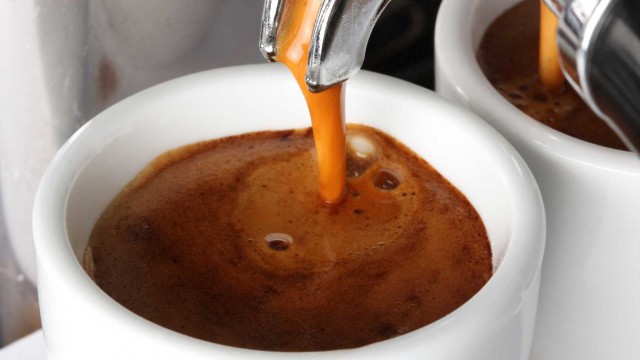
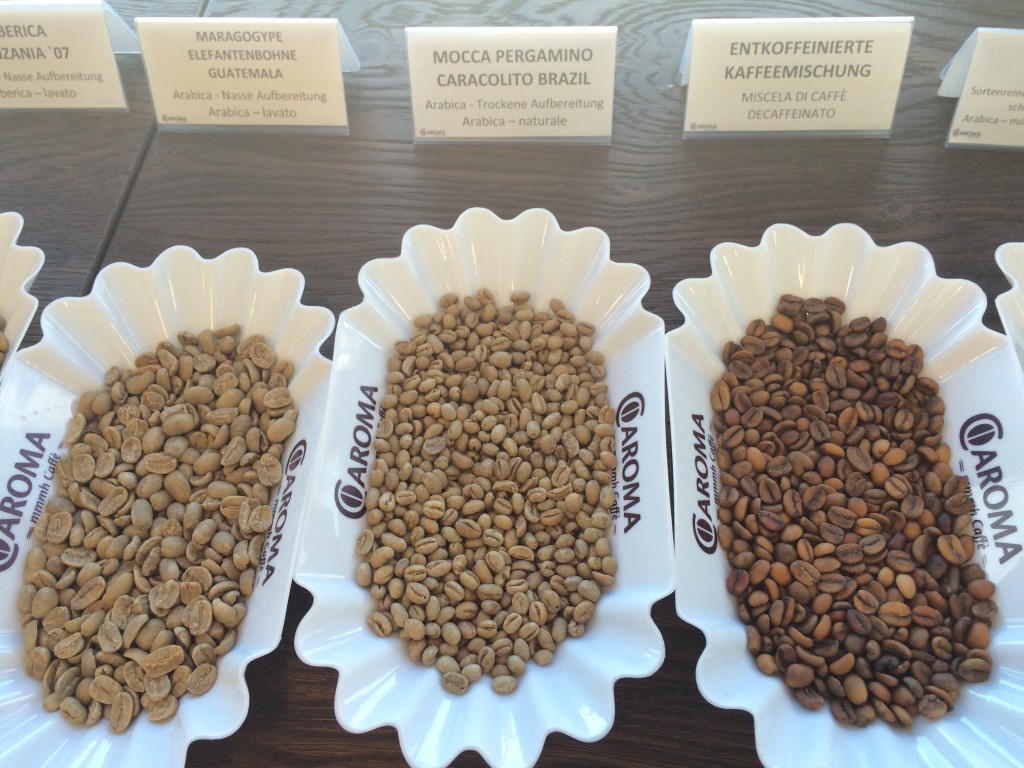
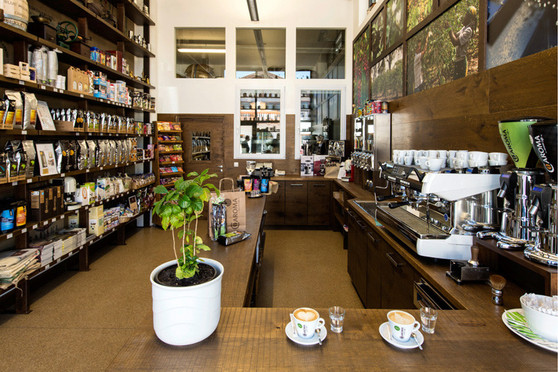
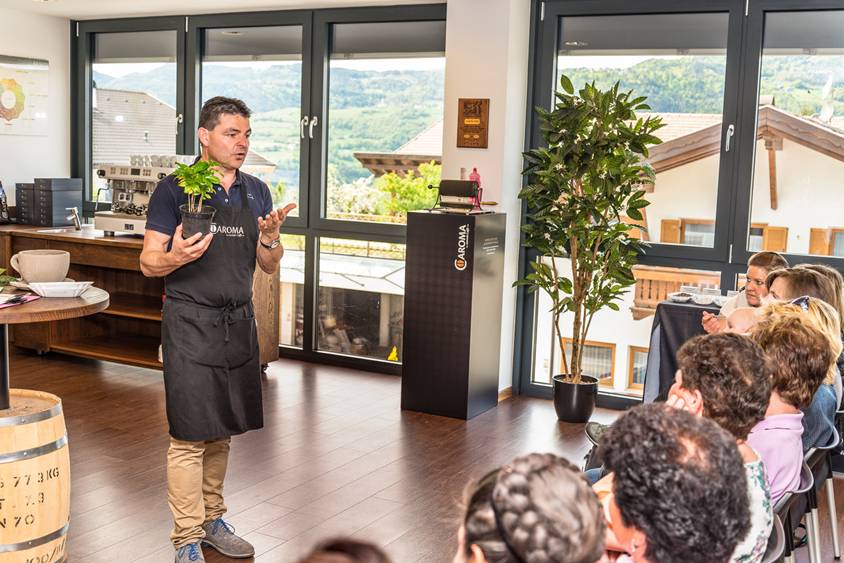
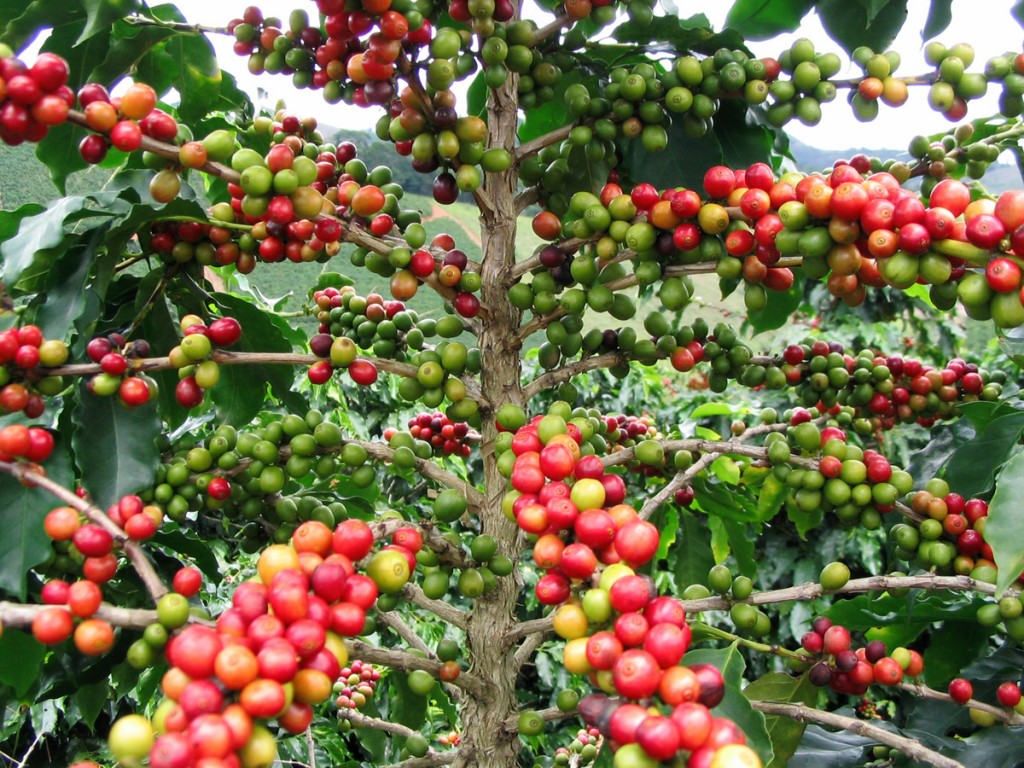
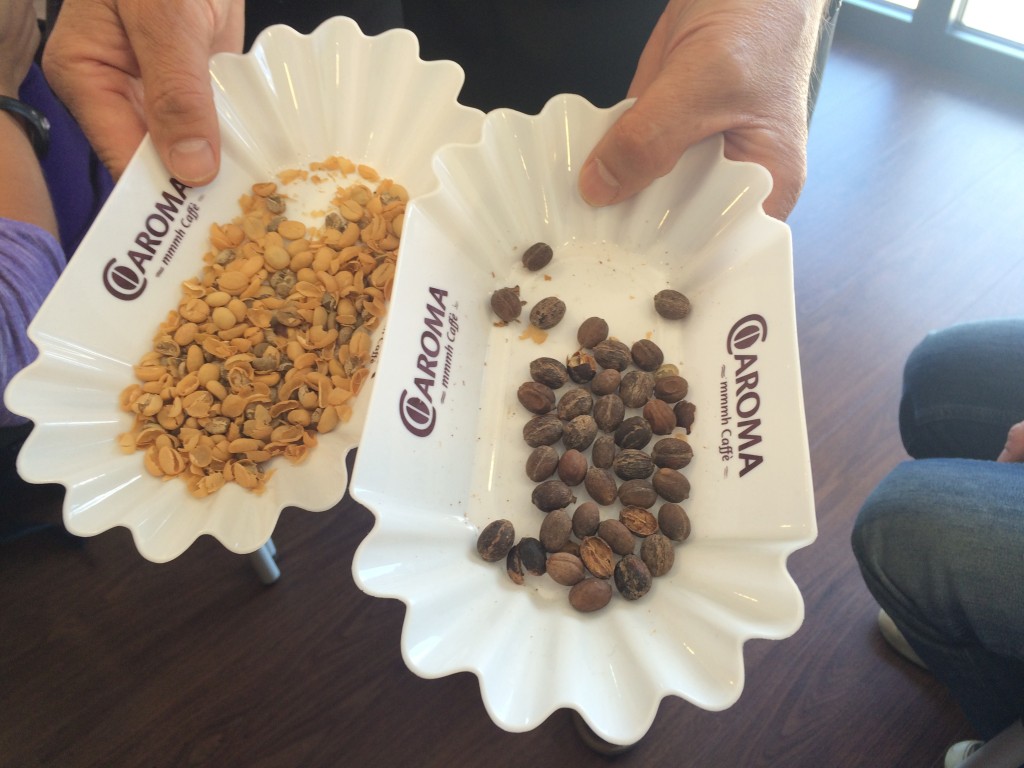
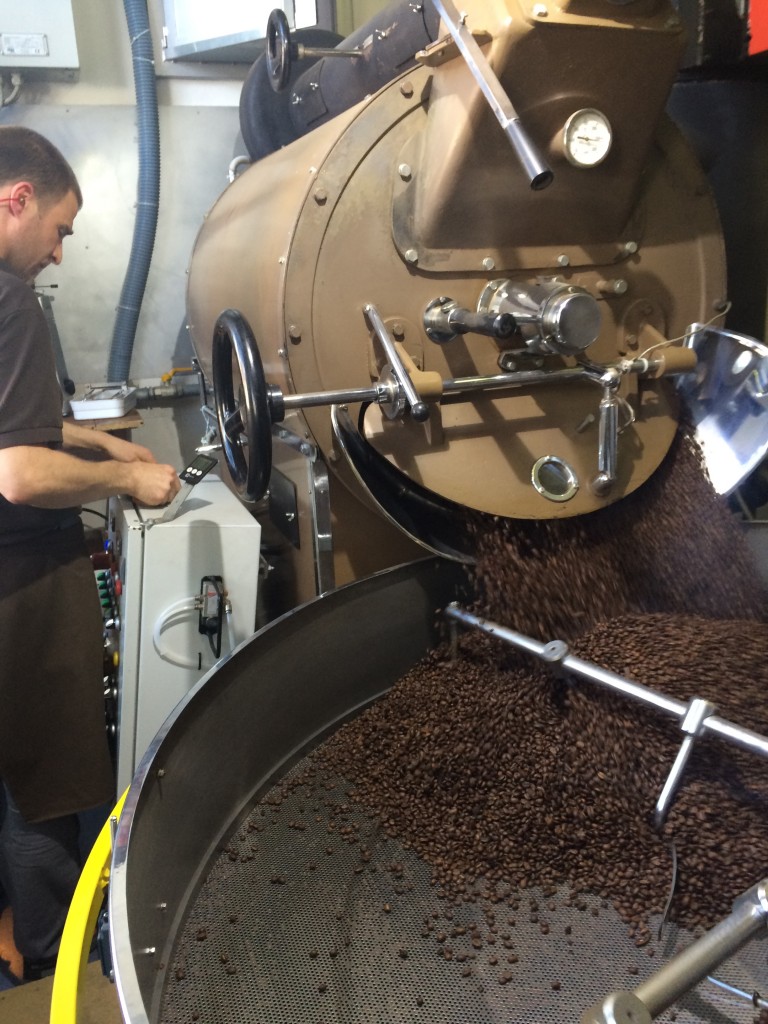
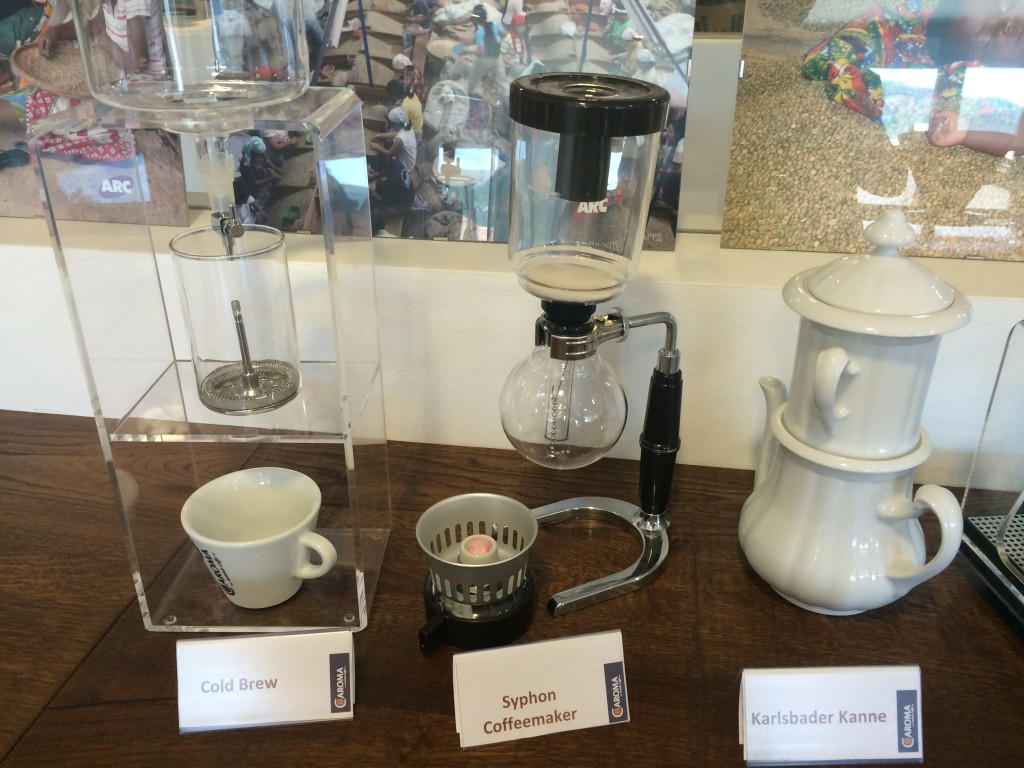
Anyone with an interest in coffee should visit the amazing Illy coffee factory and University in Trieste Italy.
Oh, its all so complicated! And fascinating.
Hi Peach – next time I visit Trieste, will do.
Hi Gwenda – yes indeed, and even more complicated when it comes to Fair Trade…
Sheridan
Sheridan, what brand of coffee can we purchase in Australia that is good quality. I have been using Vittoria but not too happy with it. Any suggestions?
Really enjoyed your article.
Hi Linda – Toby’s Estate is pretty good: https://www.tobysestate.com.au/